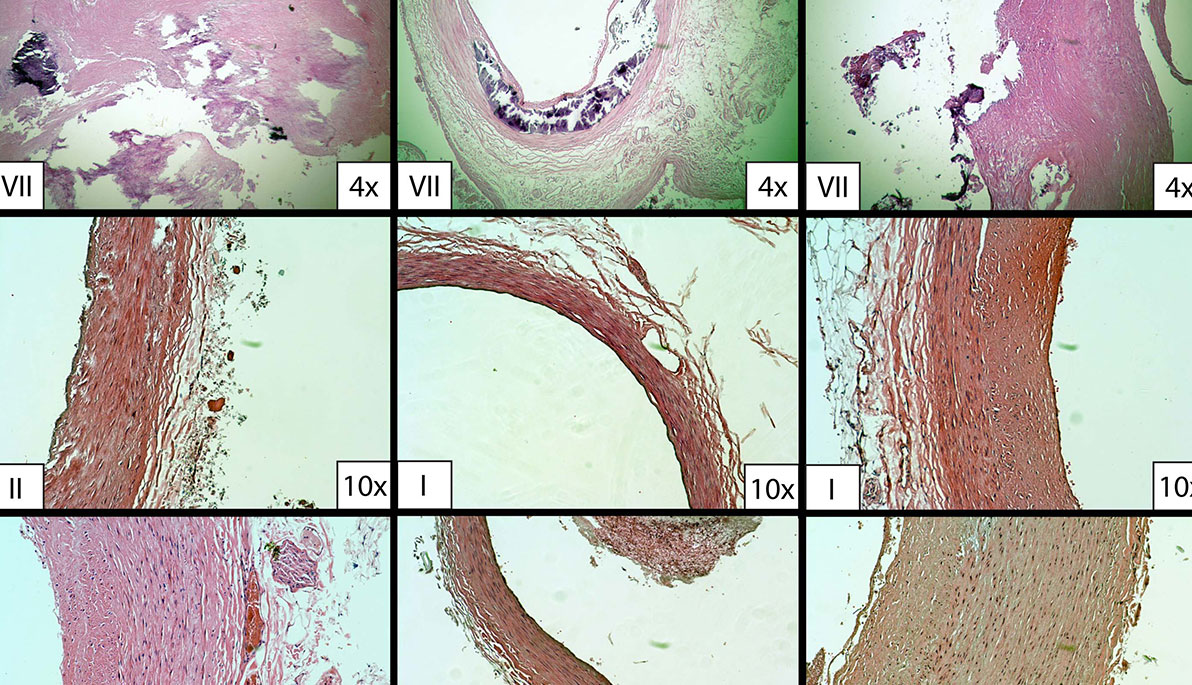News
Researchers Find a Way to the Heart of Heart Disease
April 28, 2017
What if there was an easier way to determine if someone is at risk for a heart attack?
Atherosclerosis, commonly known as hardening of the arteries, has long been seen as a strong indicator of coronary artery disease (particularly as compared to traditional risk factors such as race, age, gender, and metabolic profile), however there is currently no simple method to diagnose atherosclerosis or monitor response to treatment. A new study by a team of NYIT College of Osteopathic Medicine researchers—Brian Beatty, Ph.D., and Bennett Futterman, M.D., both associate professors at NYITCOM, along with third-year NYITCOM student Christopher Hoehmann—could change that.
In “Peripheral Arteries May Be Reliable Indicators of Coronary Vascular Disease,” published in The Anatomical Record, the co-authors suggest that arteries in peripheral areas of the body may correlate to those in less accessible areas, and that medical professionals may be able to identify ischemic cardiovascular disease (reduced blood flow to the heart) using peripheral arteries, such as those in the wrist.
“We wanted to know if peripherally accessible arteries demonstrate the same characters as arteries that are not accessible and can lead to heart attack or stroke,” said Hoehmann.
“High definition ultrasound may be a very useful tool to use. This would allow for wide use of a non-invasive technique to assess atherosclerosis. Artery biopsy requires a surgical procedure and would be impractical,” added Beatty.
In 2015, Hoehmann, then a first-year anatomy student, approached Beatty about the research, and together they came up with a plan for the study, which took place during NYIT’s summer research program. Using 48 different cadavers, Hoehmann cross-sectioned arterial samples from 13 different locations, representing three different types of arteries—carotid, central, and peripheral. He examined more than 600 samples under a microscope. Through this process, known as histopathology, Hoehmann was able to examine the occurrence of atherosclerosis and determine where similarities existed among the different types of samples by using the American Heart Association’s grading scale.
“It turns out that the development of atherosclerosis in the radial artery of the wrist, of all places, was implicated in atherosclerosis development of the left coronary artery and the bifurcation of the carotid artery in the neck. Two important vessels in the development of stroke and heart attack.” said Hoehmann.
“This is potentially useful because it means theoretically you could have some kind of sensitive ultrasound that measures flow of blood in the wrist and get a sense if you have cardiovascular disease,” added Beatty.
Hoehmann said that designing the project and seeing it through to publication with Beatty and Futterman helped him grow and learn both as a medical student and a researcher.
According to Beatty, Hoehmann was dogged in his data collection and work, which at times became tedious. “When he was done with all the slides, he went back again and looked at the first several hundred to see if he got the same numbers, to make sure he wasn’t making mistakes in the beginning,” said Beatty.
“I think medical students in general should be more involved in research,” said Hoehmann. “Evidence-based medicine is what guides our practice and backs up what we do.”

By Emily Rogan




